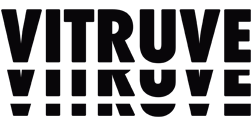13 de August de 2024
Unlocking the Basics of Velocity-Based Training: Key Concepts and Definitions
In the realm of sports science and strength and conditioning, mastering advanced techniques requires a solid understanding of the basics. Velocity-Based Training (VBT) is a cutting-edge approach that shifts focus from traditional metrics to the speed of movement, offering a fresh perspective on performance enhancement. This blog delves into the fundamental concepts and definitions that underpin VBT.

What is Velocity-Based Training?
Velocity-Based Training (VBT) measures the velocity at which an athlete moves a load. Unlike traditional methods that focus primarily on weight lifted, VBT provides a more comprehensive view by considering the speed of each movement. This approach offers valuable insights into an athlete’s power output and neuromuscular efficiency.
Key Metrics in VBT
- Mean Propulsive Velocity (MPV): Measured in m/s, MPV indicates the intensity of training and is more reliable than %1RM for determining intensity and fatigue.
- Velocity Loss: Tracking velocity loss during a set helps assess fatigue levels. A significant drop may indicate the need to adjust training loads or extend recovery time.
- Rate of Force Development (RFD): Measures how quickly an athlete can generate force, crucial for explosive movements like sprints and jumps. RFD is a superior indicator of athletic performance compared to maximum strength alone.
- Peak Velocity: The maximum speed achieved during a lift, especially important for ballistic lifts and loaded jumps.
Application of VBT in Training
VBT’s versatility allows it to be integrated into various training methodologies. Whether focusing on hypertrophy, strength, or power, VBT provides data-driven insights that enhance programming. For instance, athletes aiming to improve sprinting speed can target lifts that maximize RFD, while those focused on strength gains can use velocity loss to optimize training volume and intensity.
Key Takeaways
- Comprehensive Metrics: VBT offers a holistic view of performance by focusing on speed and fatigue.
- Versatility: Suitable for various training goals, including strength, hypertrophy, power, and endurance.
- Real-Time Feedback: Provides immediate data for on-the-fly adjustments to training plans.
Conclusion
Grasping the fundamental concepts of Velocity-Based Training is crucial for optimizing your training approach. By focusing on metrics like RFD, velocity loss, and peak velocity, VBT offers a nuanced view of athletic performance. Stay tuned for more insights into how VBT can revolutionize your training!

